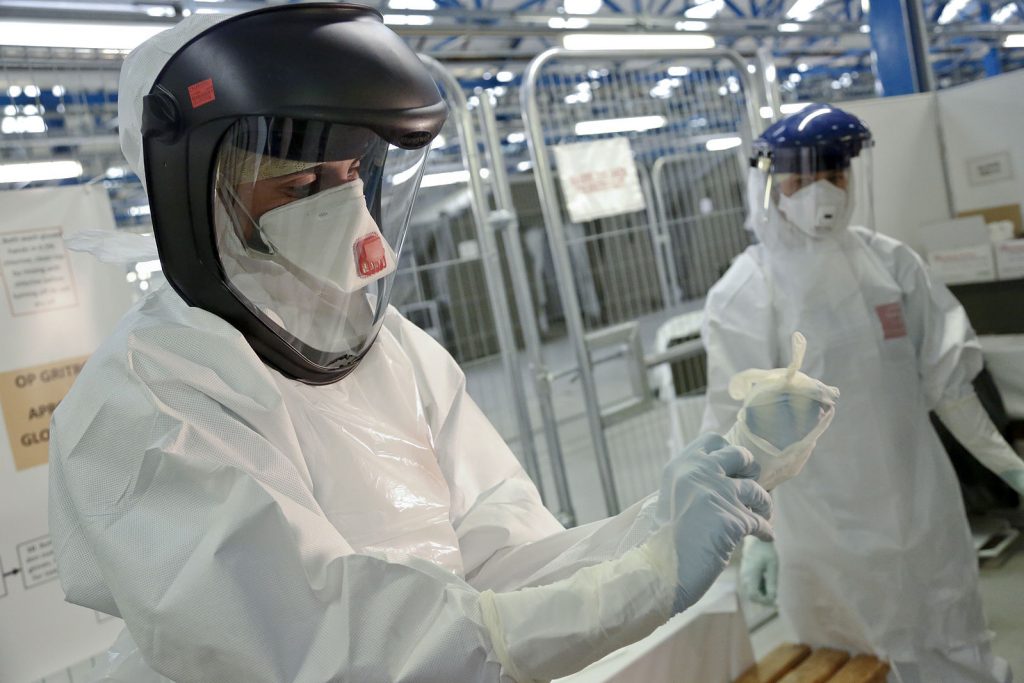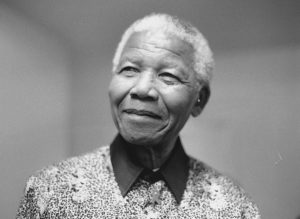Nurse Nina Pham arrived at Texas Presbyterian Hospital in Dallas for her regular shift. The patient that she was assigned to take care of was named Thomas Duncan. Little did she know that this patient would change her life, but not particularly for the better. A few days after Nina met her patient Duncan, she woke up sick. She knew in her heart that she had been contaminated somehow. She was later diagnosed with having the Ebola virus. That day started a long battle for Pham, fighting for her life.

Nina Pham and few other nurses were assigned to take care of Duncan in his most critical state. Nina Pham was his primary nurse, but she was given little information about what disease Duncan was carrying. Nina Pham claims that she lacked the complete training that she needed in order to protect herself. The CDC states that people who care for patients who are suffering from Ebola should have completed comprehensive training on how to protect themselves. According to Dr. Daniel Varga, the chief clinical officer at Texas Presbyterian Hospital, Nina Pham and the other nurses assigned did follow the CDC guidelines for protecting themselves. It is unknown when she came into contact with the disease, but according to Nina Pham, the hospital did not provide everything that it could have to ensure that the nurses were safe. Dr. Varga admitted that the hospital did not have all the resources available at the time and lacked communication, but they still followed the CDC and the state guidelines. By the time Thomas Duncan was moved to the ICU, the nurses began wearing double sets of gloves that were then taped to two gowns. Then they wore two booties and a face shield. Nina Pham claimed that though they were pretty much covered, their necks were still exposed. According to Pham, the nurses were the ones who came up with an arrangement that they felt would better protect themselves. The nurses would use the room next door to place their suits and to clean up after taking care of Duncan. As Duncan got progressively worse, the janitors stopped coming into the room. According to Pham and the three other nurses, they began to work as both janitors and nurses at the same time. They had to clean his bathroom and his room, which made them come into direct contact with his lethal waste. Nina Pham stated that there was so much waste at one point that it could have probably filled half of a patient’s room. It was emotionally and physically draining for the nurses.6 Then, when Duncan died, it left the nurses devastated. It was hard for Nina to lose Duncan, but soon she would be in the same position as him.
Three days later, after Thomas Duncan died, Nina Pham checked herself into the hospital, because she was experiencing a high fever. When she was admitted, she explained who she had taken care of, and what her condition probably was. She was quickly tested for Ebola and indeed tested positive for the disease. The hospital had just recovered from the death of Thomas Duncan, and now it faced another frightening case of Ebola. Nina was immediately placed into isolation. She told an interviewer, “I broke down crying” when she was given the news. All she wanted to do was to do her duty, which now was putting her life at risk. Nina Pham was placed on three experimental drugs. These made her very fatigued, and she claims that she did not remember a lot, due to being in and out of sleep. While she was in treatment, the hospital flew her out to Maryland to be cared for by a very specialized immunologist.7 The doctor was also a scientist and wanted to videotape her recovery in the hospital. This videotape was later released to the public, which became a problem that she dealt with. She knew why the videotaping would be a good thing for science, but she did not want it to be released to the media. Then one day after she was formally diagnosed, the news broke that a doctor named Kent Bently flew into Dallas to donate his blood. This doctor had worked in Liberia and had also contracted Ebola. But he had just beaten the disease, and by donating his blood to her, her blood would then have the antibodies that she would need in order to fight the disease.8 Then, on October 24, 2014, Nina Pham was released from the hospital Ebola-free. This was a victory for the hospital and for her. Though it was a scary time, Nina Pham was able to come out of it whole.

Nina Pham was free of Ebola but she still suffered from the effects of the disease. The doctors told her to be prepared for the long-term effects of Ebola. Some of them are weakening in the sensory nerves, poor vision, and possible failure of organs. She was twenty-six years old at the time when she contracted Ebola. Nina is not sure if she can have children, and whether her children might be affected by the disease. She has also experienced her hair falling out and extreme fatigue. Her liver also produces a high amount of enzymes, which makes it hard for her to eat certain foods.9 As of October 2016, Nina Pham had not returned to work, but was still getting paid regularly. She filed a lawsuit against the hospital, suing for her physical and mental health, medical expenses, and the future loss of earning.10 The specific amount of money that she is suing for is unknown. NBC News reported that it cost up to $30,000 per day to take care of a patient who has Ebola. The prices can increase depending on the severity of the patient. The hospital has to dispose of Ebola patients’ beds, which can cost up to $146,000. Dr. Jeffrey Gold, a school chancellor at the University of Nebraska Medical Center, wanted Congress to create funding and policies that would help to reimburse hospitals that deal with these types of rare diseases.11
Ebola can also affect the economy and the politics of a nation. After the Ebola outbreak, the Obama Administration asked Congress for $6.18 billion to use for emergency funding to help understand rare diseases, and also for how to prevent another outbreak from happening. The money would be parceled to organizations like the CDC, who would receive $1.83 billion. Not only has the United States set up money for a future outbreak and more research, Sierra Leone, Guinea, and Liberia have done the same. Liberia has set aside $812 million dollars, Sierra Leone has put aside $844 million dollars, and Guinea has put aside $2.89 billion.12 Each of these three countries have not only set aside money, but have also created recovery plans. They are all going about the recovery plans in different ways, but they are all aiming for the same thing, which is to update their health care system and work on improvements that will benefit the country. Ebola is not only a hard disease to get rid of, but also an expensive disease. After the Ebola outbreak in 2014, Washington was busy at work trying to figure out ways to reduce the chances of another disease coming into America again. They want to lower the chance of having infected people like Thomas Duncan from bringing Ebola into the United States. The Republican majority in Congress at the time wanted the White House administration to impose a travel ban on West African countries. President Obama did not want to do this because, according to the CDC, a ban would not do much. Instead, the administration wanted to focus on making new safety guidelines to help US healthcare workers deal with diseases like Ebola. Both Democrats and Republicans did settle on making improvements to the hazard suits, training, and education about more diseases for US hospitals.13. Ebola was a real wake up call for America to update their policies and get their priorities straight.Ebola consumes everything in its way. It takes over the victim’s body, the national economy, and a nation’s domestic politics. It is a hard disease to fight and contain. There are many things that scientists need to learn about the disease in order to find more effective cures for it. The 2014 outbreak was like a nightmare that the whole of America woke up to. Thomas Duncan, who lost his life, and Nina Pham, who was close to it, show why it is important for America to rise and take control of its healthcare.
- Nichols Hannah, “Ebola: Symptoms, treatment, and causes,” Medical News Today (May 2017): 1. ↵
- “About Ebola Virus Disease,” Center for Disease Control (February 2016): 1. ↵
- “Ebola virus disease,” World Health Organization (June 2017): 1. ↵
- Richard Preston, The Hot Zone (New York: Random House, 1994), 28. ↵
- Greg Botelho, “Thomas Duncan: First Ebola Death in U.S,” CNN News, (October 2014): 1. ↵
- Jennifer Emily, “Free of Ebola but not fear,” Dallas News (February 2015): 1 ↵
- Frank Heinz, “Pham transported to NIH in Maryland,” NBC-DFW News (October 16, 2014): 1. ↵
- “Dallas nurse battling Ebola says she’s doing well,” ABC News (October 14, 2014). ↵
- Emily Jennifer, “Free of Ebola but not fear,” Dallas News (February 2015): 1. ↵
- Jennifer Emily, “Nurse Nina Pham settles Ebola Lawsuit against Texas Health Resources,” Dallas News (October 2016): 1. ↵
- “Cost to treat Ebola: $1 million for two patients” NBC News (November 2014): 1. ↵
- Zoe Mullan, “The Cost of Ebola,” The Lancet, Vol 3 ( August 2015): 423. ↵
- David Morgan and Toni Clarke, “Republican take aim at US Ebola response after 4th case emerges,” Reuters, (October 24, 2014) 1 ↵



86 comments
Lisa Varela
I remember hearing about the outbreak on the news and the panic that emerged. The phrase at the end about Ebola consuming the victim’s body, that national economy and the nation’s domestic politics could not be truer, although I had never thought of it that context. Ebola is usually associated with the physical harm it can do to a person but not the other reproductions.
Cameron Ramirez
I remember reading about the Ebola outbreak in West Africa in high school. Ebola is such a terrible virus that causes havoc on the human body. I would never wish Ebola on anyone. I was also astonished to hear that Ebola was also found in Dallas after a man traveled to an affected country that had experienced the Ebola outbreak. Your article was fascinating, and it was well written. Good work Christine!
Troy Leonard
Well written article with great information to back up the topic. while reading this was a really serious disease that happened in 2014. With the way that the media is it really wasn’t taken as serious as it should have been. people were really losing their life and it was a big joke to the people that were not effected by Ebola. I did enjoy how you incorporated Nina that overcame Ebola.
Erik Shannon
This is a very interesting article. It is also very informative. I remember Ebola used to be a big deal and controversy across the world. The government really should put more money into research and ways to prevent a mass outbreak like this happening again. IF we keep the world more cleaner, this is another small way of helping the environment. Overall, this is a very informative article.
Manuel Aguilera
Wow, I did not realize the magnitude of the damage that the Ebola virus caused. I was not aware that it affected America medically, but also economically. I am concerned as to how exactly the nurse was still diagnosed with Ebola yet it was because she was going beyond her duty to care for her patient. I am curious to know if she had won the case after all. I am curious to know if there are anymore Ebola cases out there today. It is usually rare to hear about them now.
Samman Tyata
Great article! I still remember the impact that the Ebola virus had created back in 2014. Well, I knew something about Ebola, but your article has successfully helped me to know more about it. It was interesting to know that with the early action the disease was possible to cure. Furthermore, it was nice to read that $6.18 billion was raised to help understand rare diseases, and also for how to prevent another outbreak from happening. To sum it up, it was a good read.
Clarissa Bustamante
I remember there being an Ebola virus going around but I was unaware that it was occurring somewhere very close to where I live. This article is very good and does a give a great argument as to why the government should put more money into research of finding out more about viruses. Also, how there should be an appropriate approach for such an outbreak and dangerous situation. But I am glad that Nina was able to get through the disease.
Lauryn Hyde
I remember the Ebola breakout and the panic it caused within america when a case was discovered in Texas. It was all over the news and internet, people were extremely worried. A good book that was related to the Ebola outbreak is the Hot Zone. It is a non- fiction book that has to do with a virus that is highly contagious. The virus shows how important it is to take pre cautions when faced with a problem that we don’t know how to solve.
Richard Navarro
I remember the Ebola outbreak. It wasn’t really a huge deal to me because no one ever got it around me. For the longest I believed that this virus was overseas. So we always joked about having Ebola. Until, I read this article, I never took the virus serious. This is a very interesting and well written article. I feel bad for the doctor who actually caught this virus. It must be painful.
Carlos Aparicio
This was such an informative article for me because I was aware of the Ebola attack in 2014. It’s a shame that Thomas Duncan lost his life to Ebola just for doing a good duty. Also, it was amazing to read that Nina survived the deadly virus. Not many people survived the attack, which was a real threat to the world. I enjoyed reading this article because of how much information was put into this research.